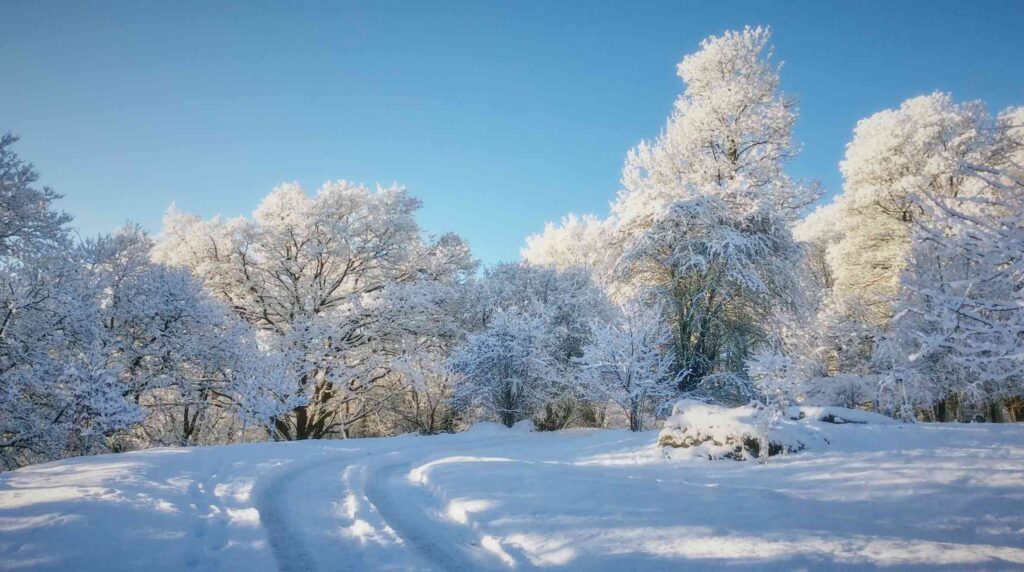Flowers
Snowdrops are showing near the wooden gate. Bluebell and daffodil shoots are appearing.
Trees
Several new trees went in this month at various sites – see if you can spot some of them – 10 oak, 10 beech, 5 silver birch, 5 crab apple, 1 deodar cedar, 1 yew and a few juniper bushes. More are going in next month. It is nearly the end of the planting season for bare-rooted trees because they will emerge from dormancy as the weather warms up. Most of our trees are planted once they are already 1.8m – 2.4m high to stop deer reaching the growing tips. Thanks to Thorpe Trees of York for the native broadleaf species.

Pond
Look out for the visiting male and female goosander – the male is like a big white duck but with a pointed beak and a habit of diving and emerging with a fish.
Regeneration
Work continues on keeping invasive species in check and planting into the cleared spaces. Given the softness of the ground (when it’s not snowy!) this is a good time to root out bramble and nettles which are overtaking paths and bluebell areas.

Tree of the month
Crab apple. Malus species. The crab apple, or “wilding” is being reintroduced. It is an ancient native tree, often found at the edges of woods and in hedgerows. In spring it has pink-tinged white blossom, and in autumn the yellow fruits are a feast for birds. To humans the fruit are very bitter, but can be boiled up and strained for crab apple jelly or to add sharp failure to cooking. In Old English “crabbe” meant “bitter” or “sharp”. Also, in a few places, edible apple species have been planted. Future generations of foraging humans, as well as birds, should appreciate them.


